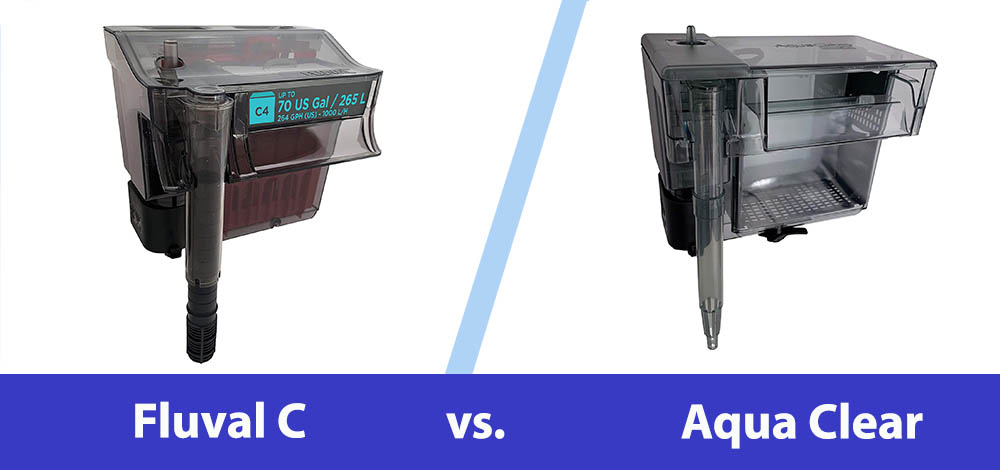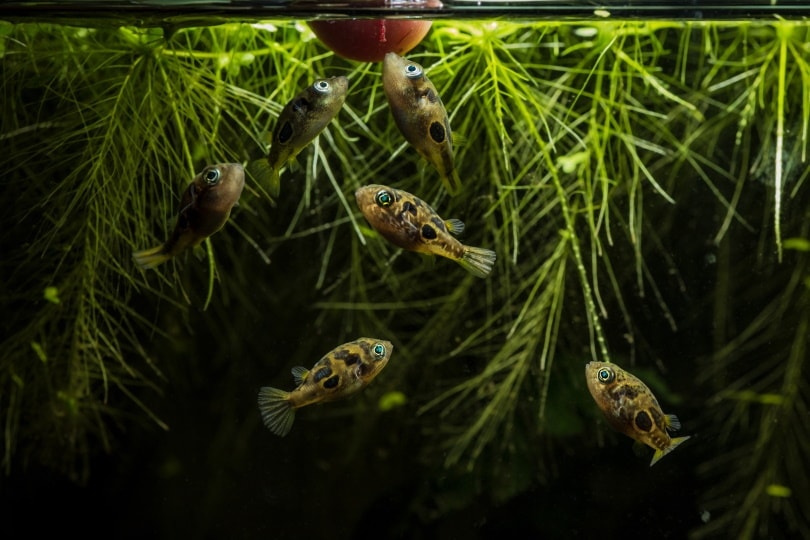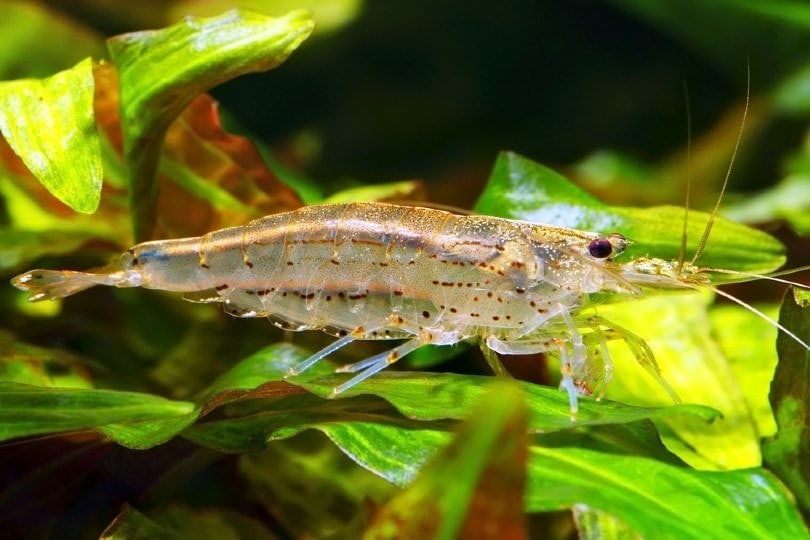How to Set Up a Fish-Only Aquarium: 8 Step Guide (With Pictures)
Updated on
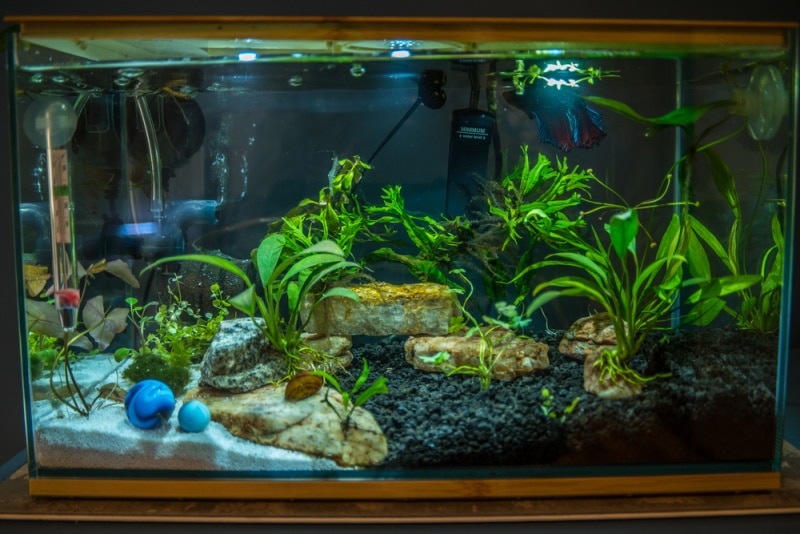
There are a lot of different types of aquariums you can keep, from saltwater to freshwater and plant-only tanks to a tank packed with plants, fish, and invertebrates. It’s important to know how to set up the type of tank you want, though. By planning ahead and researching the proper care and setup of your tank, you’ll save yourself time and effort by getting things right the first time around.
If you’re planning to keep an aquarium with just fish, you’ll need to research the individual needs of the fish species you’re considering bringing home. No matter what type of fish you’re planning to bring home, there are a few steps you should plan to take.
In this article, we cover:
The 8 Items You Need to Set Up a Fish-Only Aquarium
1. Aquarium
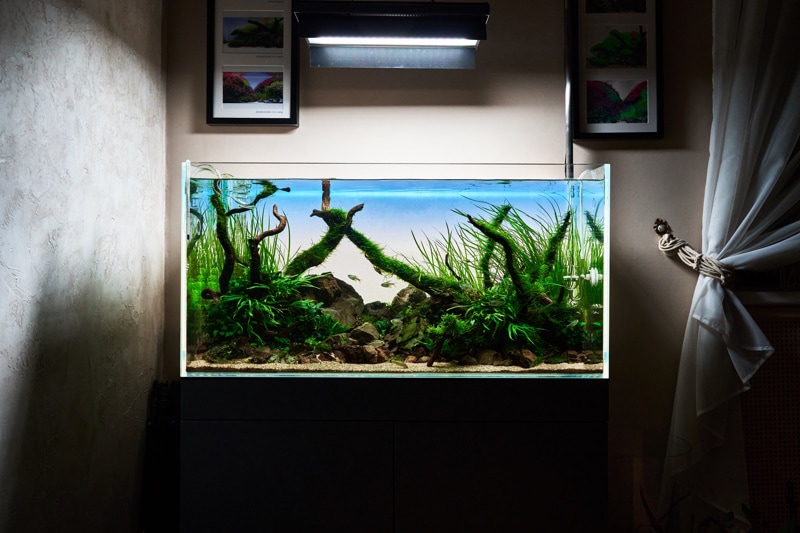
The most obvious item you need to get your tank up and running is the aquarium itself. You need to plan for the fish that you are bringing home. Different species of fish have different tank size requirements, so make sure to research the tank size needs before you purchase a tank. You will also need to consider what type of tank you’d like. Acrylic, glass, and plastic are all tank options, and there are a variety of options for tank shapes and lids.
2. Dechlorinator
Chlorine is added to tap water to help keep it clean and safe for consumption. Unfortunately, chlorine can be dangerous for fish, so you will need a plan for eliminating the chlorine in the water before your fish are exposed to it. You can put water in a bucket and let it sit for a couple of days to allow the chlorine to evaporate, but a dechlorinator will allow you to safely remove the chlorine from your tank water in a matter of minutes.
3. Filtration
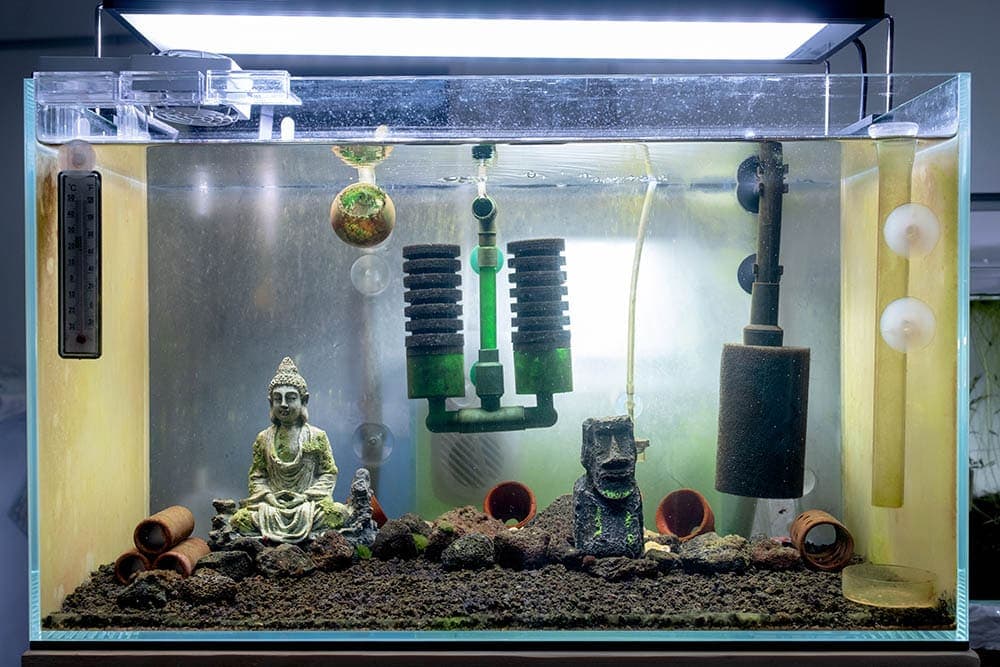
A filter is necessary for keeping your tank clean and safe for your fish, and it is the most vital item for maintaining your tank’s beneficial bacteria cycle. The type of filter you need will vary depending on the type of fish you are bringing home. In general, you aren’t going to over-filter your tank, but getting a filter that is too small can under-filter your tank.
4. Thermometer
There are multiple types of tank thermometers on the market. These are used to keep you updated on the current water temperature in your tank. Maintaining a stable tank temperature can be the difference between life and death for your fish.
5. Tank Lighting
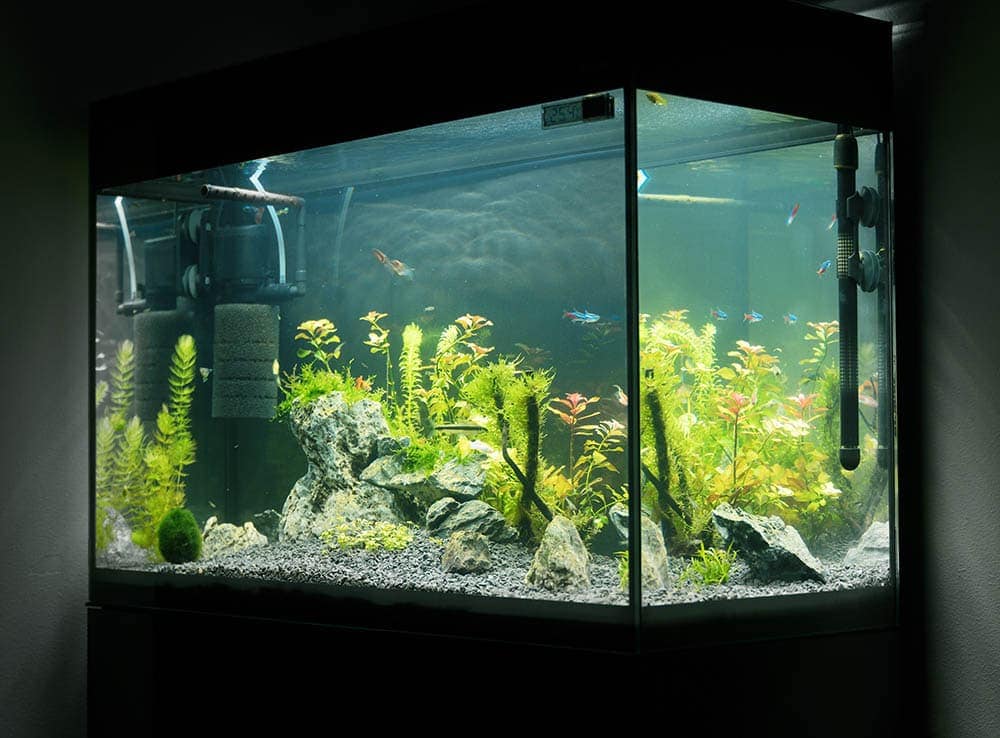
Some fish may require specialized lighting, but most fish just need a routine day/night light cycle. A tank light can help you maintain this lighting cycle, even if it’s cloudy or dark outside. Tank lighting can also be used to bring out the brightest colors in your fish, as well as support your plants.
6. Air Pump (optional)
If your tank needs air stones or a sponge filter, then an air pump is a necessity. For some tanks, air pumps and the items they power aren’t needed. Air pumps come in a variety of sizes and powers, and it’s easy to find inexpensive accessories to use with your air pump.
7. Substrate (optional)
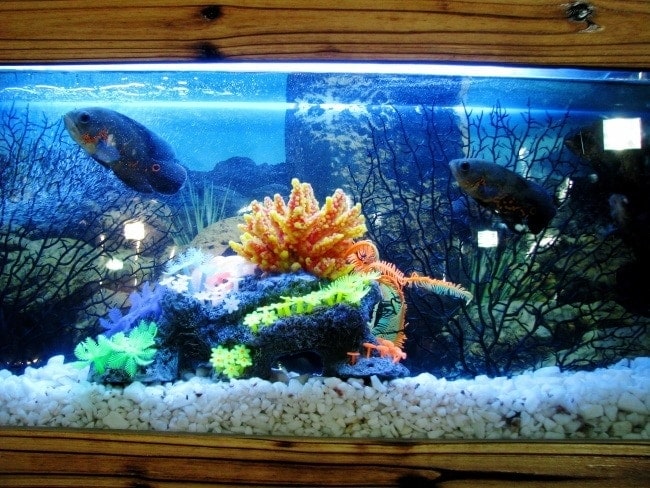
The substrate can serve multiple functions within your tank, including supporting plant life, providing enrichment for digging and scavenging fish, and making your tank look better. Substrate isn’t required for all tanks, and some people prefer the lower cleaning level associated with a bare-bottom tank.
8. Heater (optional)
Not all fish need heated water, so read up on the water temperature needs of your fish. Many people just assume that all aquariums need a heater, but heated water can actually shorten the lifespan of some fish species. If you live in a home without central heat and air, or if you live in an area with frequent blackouts, then a heater can help you maintain a more stable tank temperature.
How to Set Up Your Aquarium (8-Step Guide)
1. Rinse the Tank
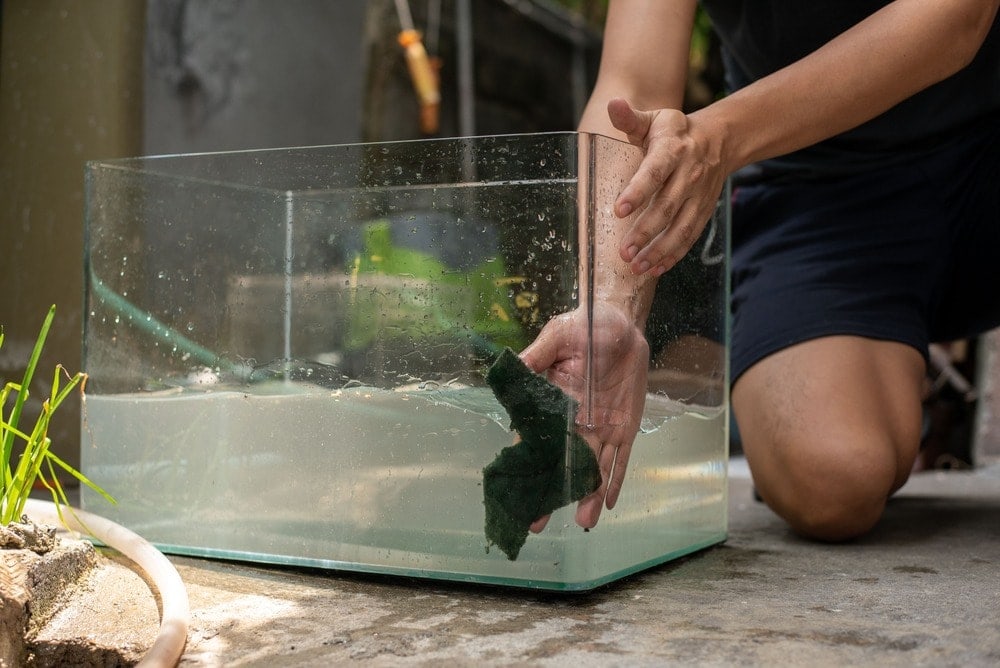
You never know what might have ended up in your aquarium when it was sitting in the store, so it’s important to rinse your tank before use. You can rinse it thoroughly with water multiple times, but some people prefer to use diluted white or apple cider vinegar to clean the inside of the tank. Make sure to rinse well after using vinegar in your tank. Do not use bleach or other cleaning products since these can stay in the water and poison your fish.
2. Choose a Stable Surface
It can’t be said enough that you absolutely cannot put an aquarium on just any surface. This is extremely important with large aquariums, but every aquarium has the potential to make a huge mess. Putting your tank on an inappropriate surface can cause the tank to crack, leak, or flat out break over time. This can not only create a huge mess but may lead to the death of your fish.
Your entire tank should sit flat on the surface without hanging over the edges, and the surface should be able to hold well more than your tank will weigh. A gallon of water weighs around 8 pounds, but you also have to consider the weight of the substrate, décor, and tank itself.
3. Rinse the Substrate
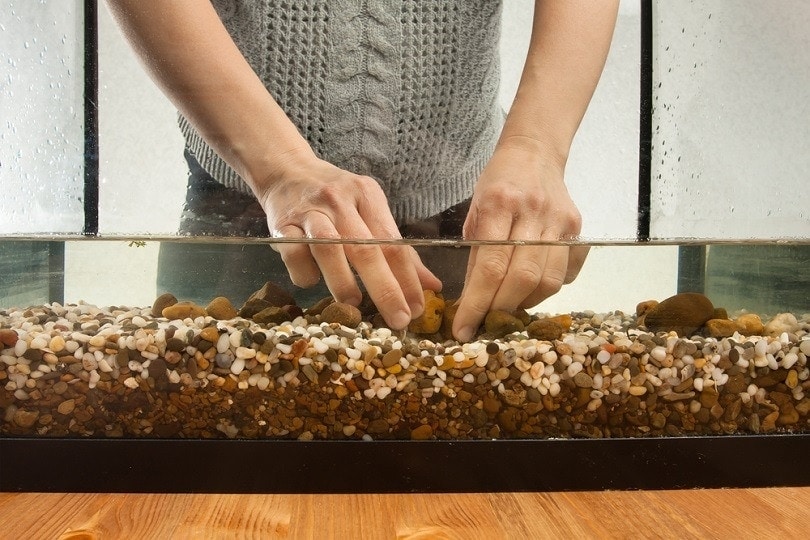
Like your tank, it’s important to rinse your substrate before putting it in the tank. The exception to this is live substrates or other substrates that are made to not be rinsed. If you don’t rinse your substrate, you may find yourself battling dust, oils, and floating bits of substrate for days or weeks after the tank gets set up. Rinse the substrate with plain dechlorinated tap water or reverse osmosis (RO) water.
4. Fill the Tank
Once your tank and substrate are rinsed and in place, you’re ready to fill the tank. Some products can help make it easier for you to fill your tank by connecting your tank directly to the nearest sink, but you can also use buckets or jugs to fill the tank. Remember to only use things that have not been used for cleaning chemicals, waste, or other potentially hazardous materials previously.
5. Set Up the Filter
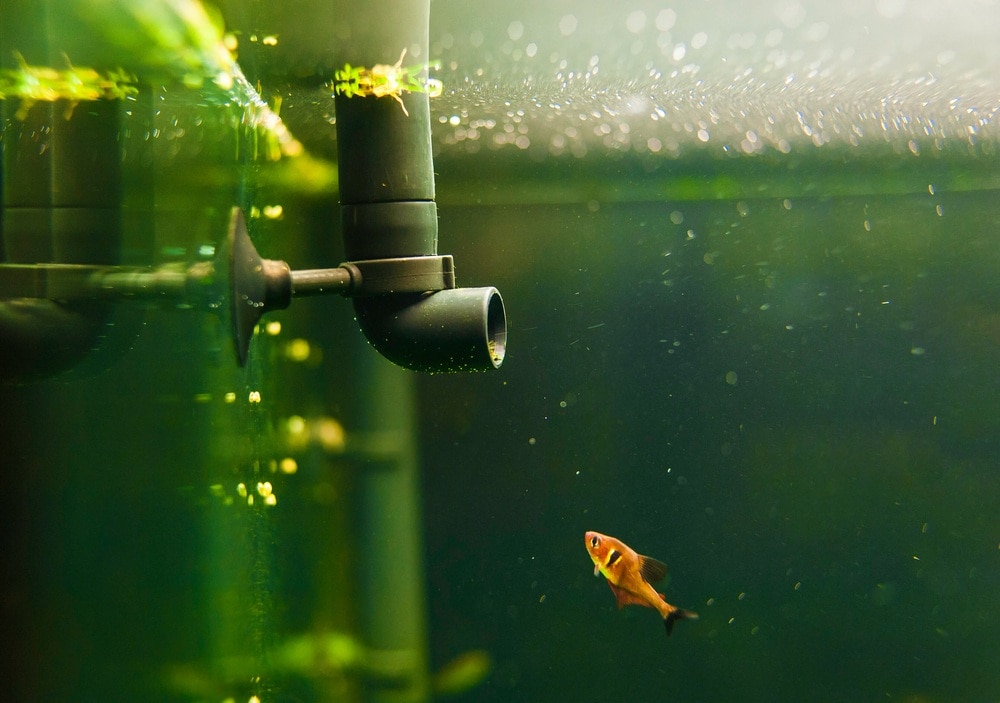
Your filter shouldn’t be set up until your water level is deep enough. Without enough water, your filter’s motor may burn out, causing it to fail altogether. Follow the instructions on the filter you purchase to set it up properly. Check the owner’s manual for instructions on parts replacement and routine cleaning and maintenance.
6. Add Décor and Equipment
Once your tank is filled, you can get your tank décor and additional equipment installed. Air stones, sponge filters, heaters, and powerheads can all be installed at this point. Never attempt to turn on an aquarium heater without it being properly installed first. Turning your heater on outside of the water risks explosion and injury.
7. Perform a Tank Cycle
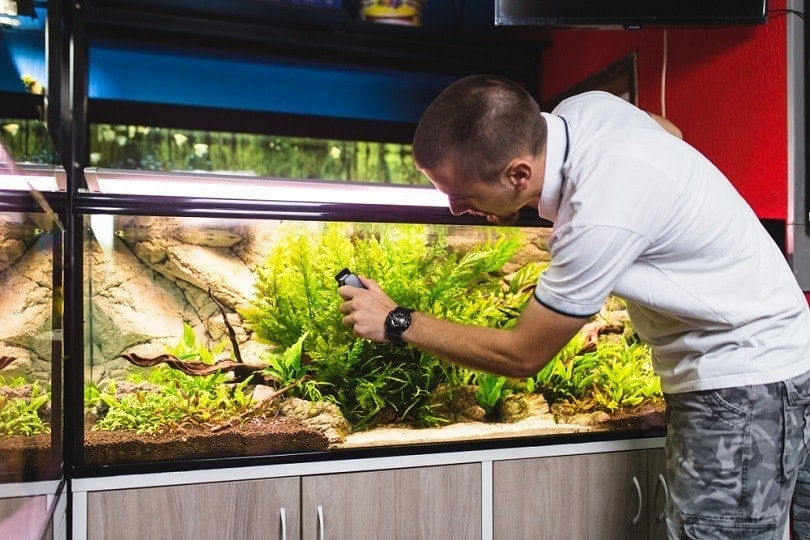
Cycling the aquarium is one of the most commonly overlooked and most important aspects of keeping an aquarium with fish in it. If you’ve already put fish in the aquarium, then you need to read up on how to perform a fish-in-tank cycle. If you haven’t gotten your fish yet, then perform a full aquarium cycle before purchasing any fish to put in the tank.
8. Add the Fish
Once your tank cycle is complete, your tank will have no ammonia or nitrites, but it will have some nitrates. Most fish keepers aim for nitrates at or below 20–40 ppm, depending on the fish and the keeper’s preferences. To introduce your fish to the tank, consider drip acclimating them. For hardy fish, you may not need to drip acclimate them.
Conclusion
Setting up your aquarium to keep fish is a multiple-step process, but all of the steps are important and shouldn’t be overlooked. Plan well in advance for the type of tank you’d like to keep so you don’t find yourself unprepared for keeping your fish happy and healthy. Educate yourself on the needs of the fish you’d like to bring home, so you’ll know how to set up your tank.
Featured Image Credit: Sandra Burm, Shutterstock



